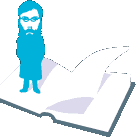英文信函:英文信函:Exercise 247
Acceptance letters 接受邀請之回覆
2.19 Acceptance letters
Dear Mrs. Smith,
Thank you for your invitation to visit ABC Corporation this upcoming year. My colleague, who is Mr. Lin, and I would like to visit your company on April 20 and not on April 13, since I have something scheduled for February the 14.
We will arrive in Philadelphia at 22:00 on Flight No. UA405. Would you please make hotel reservations for April 18, 19, and 20? A single room with two beds at a rate of around US$ 100 per night would be fine. We will leave Philadelphia on the morning of April 21.
How can we contact you once we have arrived at the hotel? Thanks again for your kind invitation. I am looking forward to meeting you.
Sincerely yours,
Writing exercise
Based on 2.19, write a letter to accept an invitation for a technical visit.
NOTE:
Acceptance letters 接受邀請之回覆 belongs to correspondence involving an overseas technical visit. Correspondence involving an overseas technical visit commonly includes the following:
- A proposal for the visit and remarks or preliminary details
- A visit should be viewed as a way of satisfying your organization's need (e.g., information exchange, short training courses, or general understanding of their operations). Details such as time and discussion topics should be included:
"It would be much appreciated if you could arrange for me to observe your production line during my stay at ABC on March 19, 1993."
"I would like to visit the Special Carbon Division (or the Technical Center) of ABC Corporation/Massachusetts during the upcoming trip."
"Professor Liu from the Virginia Institute of Technology recommended that we visit your renowned institute and find a time to discuss our needs with you, as well as to learn of your own related experiences."
"We recognize that ensuring continued success of this program depends on our observing and understanding similar work in other countries. At this stage, I would like to arrange for a visit to your country."
"I am keenly interested in visiting Dr. Jones and his staff to learn of all the operational aspects involved with this program."
Explaining the purpose of the visit
A direct statement of what you expect to gain during the technical visit may prevent confusion about what the other party is able or willing to provide:
"We need to enhance our knowledge of carbon black in terms of the chemistry, characterization, and processing application (e.g., ESD protection, wire and cable, coating and UV protection). Such knowledge would also benefit our customers, many of whom are manufacturers."
"Purpose: to understand and evaluate successful cases and the current status of the Japanese dye industry with respect to technology, equipment, and information on industrial waste minimization."
"Visits to compressor system companies that manufacture systems for heat pump or vapor recompression would be equally beneficial. Information regarding the variety of available heat pump systems would also be quite useful for future promotion of such systems in Taiwan."
Commending the organization's achievements
Complementing another organization on its achievements is not only good public relations. It also gives the organization a clearer idea of what your expectations will be when and if you pay a visit to their facilities.
"Waste minimization is a global trend, and your country already has much experience in this area."
"As is well known, ABC Corporation has the resources needed to produce good quality diverse carbon blacks."
Emphasizing the cooperative nature of the visit
The technical visit should be described in terms of a specific perspective. It is not only your own organization that stands to benefit: a technical visit can also clarify the common interests and capabilities of both organizations. This may pave the way for future collaborative activities.
"I hope this visit will strengthen the ties of cooperation that bind our organizations."
"In light of these concerns, we are looking forward to collaborating with your organization in the near future."
"We hope this visit will open doors for further cooperation between our two organizations."
Additional instruction can be found in the accompanying Power Point presentation.

Further practice can be found in
A Correspondence Manual for Chinese Technical Writers by Ted Knoy.

![]()